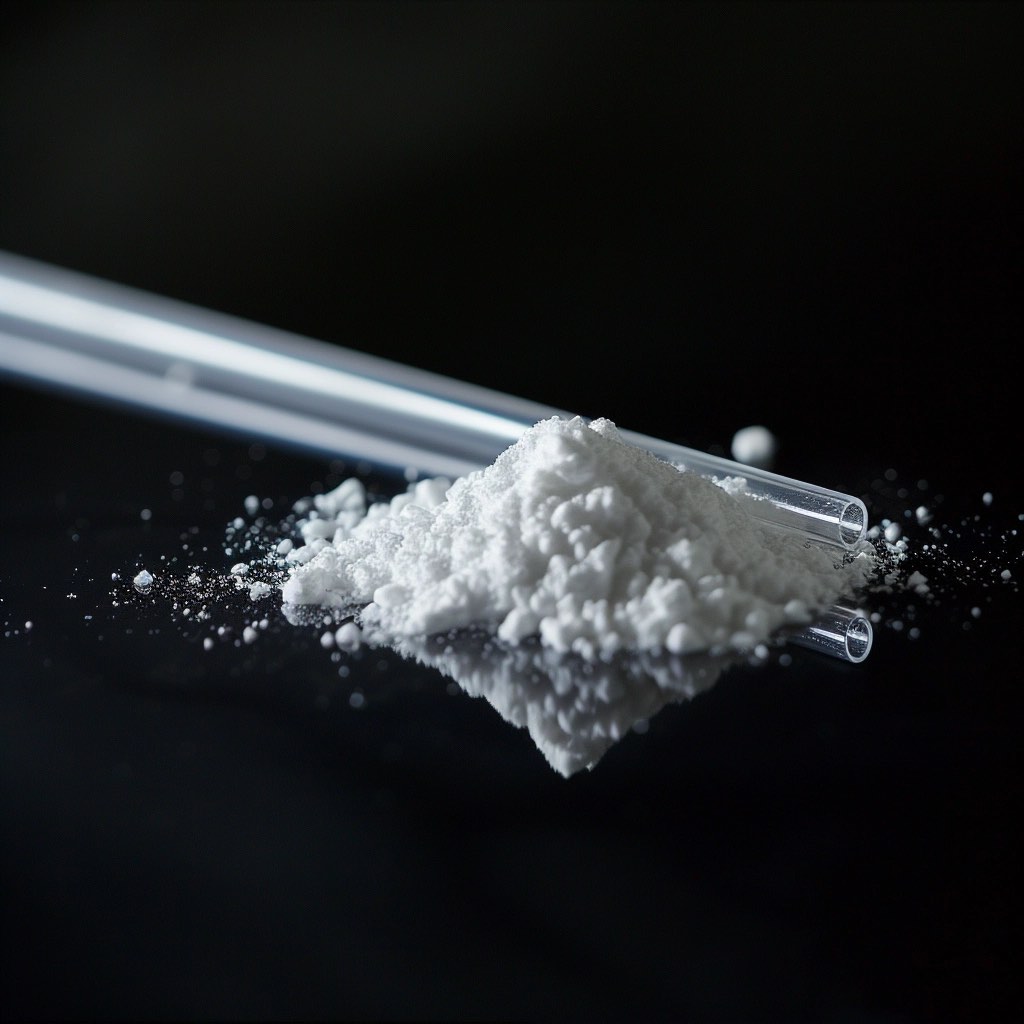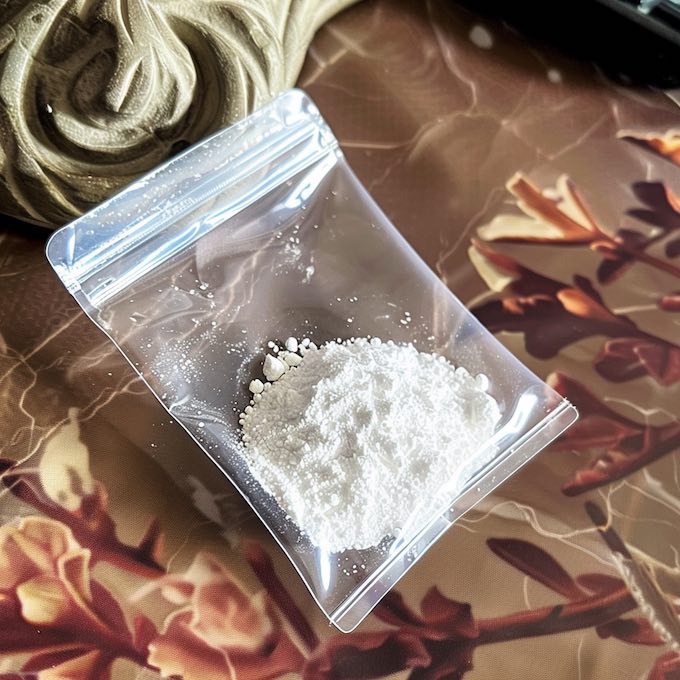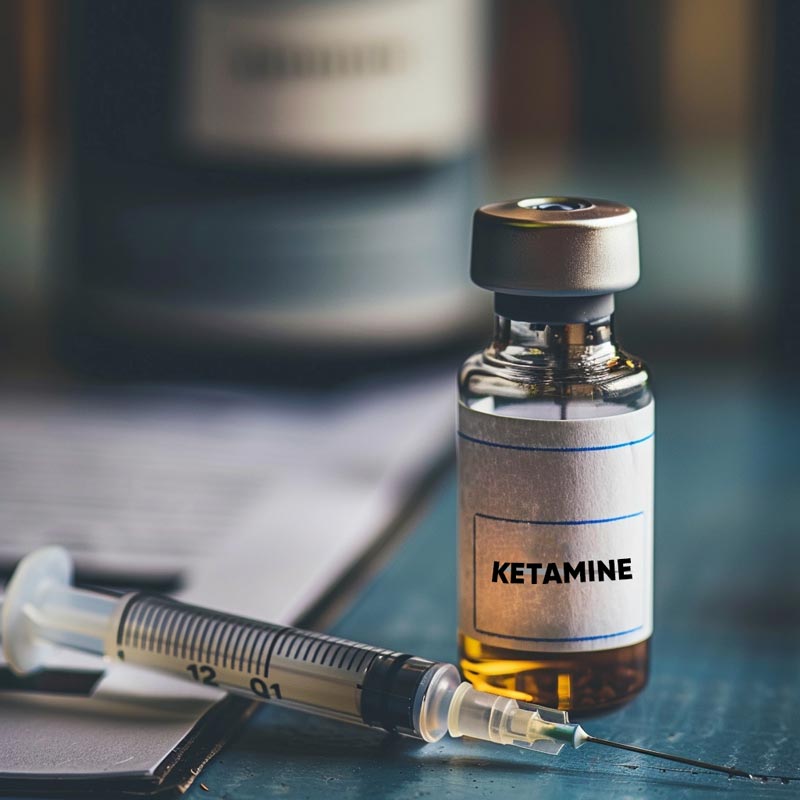Ketamine is often mistakenly categorized as an opioid due to its analgesic properties and history of medical and recreational use. Is ketamine an opioid? No, ketamine is not classified as an opioid. It belongs to a different class of medications called dissociative anesthetics. While opioids and ketamine both have pain-relieving effects, they work through different mechanisms.
Is Ketamine An Opioid?
Opioids, including drugs like morphine, oxycodone, and heroin, are well-known for their effectiveness in pain relief and high potential for addiction. They achieve their effects by binding to opioid receptors in the brain, which not only blocks pain but also triggers significant euphoria. This dual action is why opioids are highly effective but also pose serious risks of addiction and overdose.
In contrast, ketamine is a dissociative anesthetic with a completely different mechanism of action and medical application. Unlike opioids, ketamine works by blocking NMDA receptors in the brain, which are involved in pain sensation but also memory and emotions. By blocking these receptors, ketamine provides pain relief but also induces a state of dissociation—from one’s self and from the environment—which can be described as feeling detached or separated from reality.
The World Health Organization’s pain ladder does not include ketamine or other dissociative anesthetics in the same class as opioid medications. This suggests that the WHO recognizes the unique properties of ketamine that differentiate it from traditional opioid drugs.
Ketamine Is Not An Opioid
Medical Uses:
Despite being often labeled as a “horse tranquilizer,” ketamine has several applications in human medicine. It’s used for inducing anesthesia, particularly in situations where resources are limited or where patients need to maintain their own breathing and blood pressure, such as in war zones or emergencies.
More recently, ketamine has gained attention for its rapid antidepressant effects, offering potential mood improvement within hours of administration, unlike traditional antidepressants that may take weeks to become effective.
Ketamine’s Recreational Uses
Ketamine induces a dissociative state, described as a detachment from one’s environment and self. This effect, often sought after in recreational settings, leads to the phenomenon known as a “K-hole,” where users experience profound disconnection and altered perception.
Its recreational appeal, especially among clubgoers and ravers in the 1990s, led to its classification as a Schedule III controlled substance like Tylenol and Codeine, indicating a potential for abuse albeit lower than Schedule II drugs like opioids.
According to Get Smart About Drugs; Ketamine produces hallucinations. It distorts perceptions of sight and sound and makes the user feel disconnected and not in control. A “Special K” trip is touted as better than that of LSD or PCP because its hallucinatory effects are relatively short, lasting approximately 30 to 60 minutes as opposed to several hours.
One of the reasons for its widespread recreational use is its low cost compared to other illicit drugs like cocaine and heroin. Its versatility in form—available as a liquid, powder, or pill—further contributes to its misuse.
Is Ketamine “K-Holes” the Same As Opiod Black Outs?
The experience of a “K-hole” from ketamine use and opioid-induced blackouts are significantly different in their effects and implications. Both can occur in recreational contexts but have distinct characteristics and risks.
K-hole Experience
A K-hole is a term used to describe the intense dissociative state induced by high doses of ketamine. This state is characterized by a profound disconnection from one’s environment and self, often described as an out-of-body or near-death experience.
Users may feel completely detached from reality and experience distortions in time and space, which can be both enlightening and terrifying. The term “K-hole” reflects this sensation of being trapped in an immobile state, unable to interact with the surroundings.
Some users may have difficulty coming out of their state of dissociation and may continue to feel disconnected from the world around them even they stopped using ketamine.
Opioid-Induced Blackouts:
In contrast, opioid-induced blackouts typically involve a loss of consciousness due to the drug’s potent effects on the central nervous system, particularly its action on respiratory and central nervous depression. Opioids can cause users to “nod off” or lose consciousness unexpectedly, which can lead to dangerous situations if breathing becomes too shallow or stops entirely.
These blackouts are not typically accompanied by the profound dissociative experiences seen with ketamine but are rather a direct result of the opioid’s depressant effects on bodily functions.
4 Types of Opioids
There are 4 different types of opioids
1. Short-acting opioids is prescribed for acute pain management.
- Morphine: Often used in hospital settings for severe pain.
- Fentanyl: Known for its potency and rapid action.
- Oxycodone: Commonly prescribed for post-surgical pain.
2. Long-acting opioids are used for chronic pain management.
- Methadone: Also used in opioid addiction treatment.
- Buprenorphine: Utilized for both pain and opioid dependency.
- Tramadol: A less potent option with fewer side effects.
3. Semi-synthetic opioids are produced from natural sources.
- Heroin: An illegal drug with a high potential for abuse.
- Codeine: Often used in cough syrups and pain relievers.
Forms of Ketamine
Ketamine is available in multiple forms, catering to different medical applications:
- Intravenous (IV) infusion: Used for procedural sedation and intubation.
- Ketamine nasal spray: Used for acute pain management and treatment-resistant depression, available under the brand name Spravato.
- Oral formulation: Used for chronic pain management, available under the brand name Ketalar.
- Topical formulation: Used for localized pain management, known as Ketamine Mouthwash.
- Ketamine powder: Often used in recreational settings, it can be insufflated (snorted) for its dissociative effects.
- Ketamine lozenges: Used for pain management.
Effects of Ketamine vs Opioid
Ketamine Effects
Cognitive Impairments: Long-term use can lead to memory loss, reduced attention span, and difficulty with complex cognitive tasks. Users often experience ‘brain fog.’
Psychological Issues: Chronic use can result in persistent dissociation, feelings of isolation, depression, and anxiety.
Physical Health: Overuse can cause symptoms resembling schizophrenia, including hallucinations and paranoia.
A study in the Journal of Psychopharmacology highlighted significant cognitive impairments in heavy, long-term users.
Ketamine Bladder: Chronic use can lead to a painful and serious bladder condition known as ketamine bladder.
According to NIDA’s research, about 27% of occasional ketamine users had bladder symptoms.
Opioid Effects:
Euphoria and Pain Relief: Opioids produce significant euphoria and pain relief by binding to opioid receptors, but this also leads to a high risk of addiction.
Adverse Effects: Include drowsiness, mental confusion, nausea, constipation, and slowed breathing. High doses can lead to respiratory depression and fatal overdose.
Addiction and Dependence: Repeated use leads to tolerance, requiring higher doses to achieve the same effects, quickly leading to dependence and severe withdrawal symptoms.
Risk of Ketamine Abuse vs Opioid Abuse
Ketamine and opioids both carry risks of abuse, but their patterns and potential consequences differ. Ketamine, which does not act directly on opioid receptors, tends to lead to psychological dependence rather than the physiological dependence typical of opioids. Its abuse can result in serious health issues like impaired breathing, heart problems, and in severe cases, convulsions and death.
Is Ketamine An Opioid?: Medical Applications and Unique Uses
Ketamine, distinct from opioids, serves various medical purposes, from anesthesia to managing pain and treating depression. Unlike opioids, which primarily target opioid receptors, ketamine acts on NMDA receptors.
Ketamine in Opioid Withdrawal Treatment
Interestingly, ketamine has been explored as a treatment to help alleviate withdrawal symptoms from opioids. Because it works on different receptors, ketamine can help manage the pain and discomfort during the detox process without the risk of respiratory depression associated with opioids. A study by the National Library Of Medicine has shown that when used under medical supervision, ketamine can ease the withdrawal process, making it a useful tool in addiction treatment strategies.
Case Study: Officials used Ketamine at Thai Cave Rescue
A compelling example of ketamine’s unique application in emergency medicine occurred during the dramatic rescue of 12 boys and their soccer coach from a cave in Thailand in 2018. Facing a perilous extraction that required the children to remain calm and immobilized, rescuers administered ketamine due to its dissociative properties and safety profile.
Why Ketamine Was Chosen
Dissociative Effects: Ketamine induced a state of detachment in the boys, preventing panic as they navigated through narrow, submerged passages.
Safety Profile: Crucially, ketamine does not suppress respiratory function like opioids, an essential feature in the confined and water-filled passages of the cave.
Thermoregulation: The drug helped maintain the boys’ core body temperatures, preventing hypothermia in the cold, wet cave environment.
This incident underscores ketamine’s value in situations where the maintenance of respiratory function is critical, and psychological stress must be managed effectively.
It demonstrates ketamine’s potential to save lives in extreme conditions, distinguishing it from opioids, which could exacerbate respiratory challenges in such scenarios.
To learn more about how ketamine affects your brain, watch the video from Insider Science, which provides a detailed explanation of the drug’s mechanism of action and its impact on various brain regions and neurotransmitter systems.
Help For Ketamine and Opioid Abuse
If you are struggling with ketamine and opioids like oxycodone, M30s, tramadol, morphine, or heroin, help is available.
While ketamine may not always receive the same level of attention as other addictive substances like heroin and crack, chronic use of Ketamine can have severe physical and mental health consequences, potentially leading to addiction and even death.
It is essential to seek help before the addiction escalates. Recovery is possible, and overcoming Ketamine addiction is best managed through inpatient treatment programs.
If you or someone you know is battling opioid or ketamine addiction, do not hesitate to contact our toll-free helpline for information on specialized treatment options.
To Learn More About the Risks and Dangers of Ketamine Abuse :
The Dangerous of Mix: Ketamine and Alcohol
Analysis: Ketamine Addiction, 10 Side Effects, and Overdose Risks












